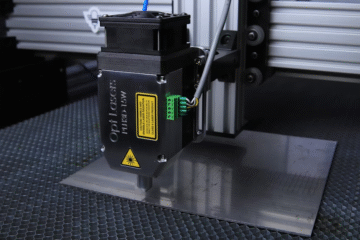Lab Report Writing: How to Create a Good Paper in 5 Simple Steps

Before any report is written, a student has to research as well as collect all the information they need. If you are in the final year of your psychology course, coming up with a good lab report is easier said than done.
If you are struggling with your report in any way, shape, or form, you can turn to your supervisors who are on hand to help you with any worries you might have. The main object of this report is to link what you highlighted in the introduction with convincing arguments and content. Below are the 5 simple steps borrowed from the best academic writers at lab report writing service online. Use them to create a good lab report paper.
Come up with a good title page and abstract
A title page is something that shows or highlights what the report will be about. Keep in mind that it should not be in the form of a question. When the title page is out of the way, it is time to write the abstract. This is a small summary which is around 150 words which spells out the aim of the study, participants, and findings.
Write an amazing introduction
A lab report without an introduction will have no hypothesis and that is why it is so important to have a very good one to set the tone. In this section, a student has to introduce their topic, narrow down important theories and be concise.
An introduction should not look at an essay at all spelling out everything that will be found in the report. The aims should stick to the topic picked and not venture off elsewhere or come out of thin air. Hypothesis and aims are two different things and need to be explained differently.
Clearly state your methods and results
When you are writing time your methods, the best approach is to assume that the person who is reading the report does not have a clue what happened behind the scenes. Stick to writing in past tense and do not in any way, shape or form, try to justify why a particular sampling method was picked above others. Below are some of the subtitles which are recommended to use
- Design. A student here has to spell out things like the different conditions, experimental design, and the independent variable label.
- Participants. This is where a student will point out their target audience or the people who helped get things off the ground. They can also highlight how they managed to get their sample in the first place. Take the opportunity sample as an example, supporting information like age, the number of people, sex, occupation, and much more can be provided.
- Materials used. This is where a student highlights all the materials that were used to get the information needed for the lab reports. These materials can include things like surveys, questionnaires, observation, computer equipment, word lists, and much more. You do not need to include a lot of materials used, just the ones that were instrumental to the success of the report.
- The process or procedure. This is simply how a student went by carrying out their research. A student here needs to explain exactly what they need in more detail to add value to their findings for the report. Try to avoid providing things like record sheets, debriefs, or in-depth instructions. Keep this section simple and straight to the point when describing your procedure.
Have good results and discussions
In the results part of the reports, you need to show statistics of your findings using things like tables. A table is highly recommended because it makes it data found easily understandable. Use APA style because you can report percentages and degrees as whole numbers.
In the discussion section, make sure you use plain and simple English without any use of slang or jargon. Make sure that you compare the results you found to the background material you put in the introduction to see if they are different or similar why giving reasons why.
Highlight any limitations that were encountered during the report and word them carefully. You have to be able to point out ways the study can further be expanded upon in the future, what the implications are of your findings. All these should be based on the limitation you encountered while conducting research and producing the report.
In the concluding paragraph, make sure you finish strong by highlighting any key points and findings. The length of this depends on your allocated word count from your tutor but make sure you do not fluff or make up any finding just to meet the word count.
References
A very important part of any lab report is the reference section it lists the sources where information was taken from. Very different from a bibliography, whenever you use information from a psychologist as part of your report, you need to write down their name, date, and the title of their work.
If you are reading their articles or journal, for example, their name, title, and date it was published is usually found on top of the page. If you are taking information from a book, everything you need to reference the book can be found at the back. If by any chance you fail to cite the sources of information you gathered, you are stealing other people’s work and presenting it as your own.




